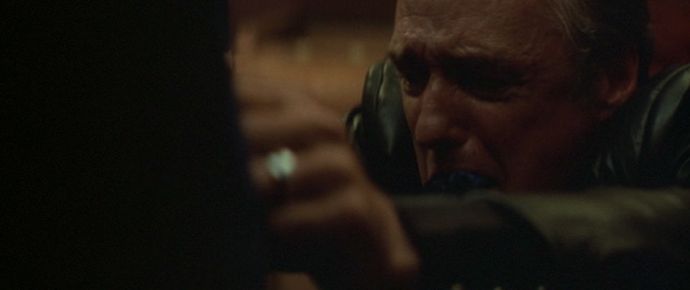 Back to selection
Back to selection
The Blue Velvet Project
Blue Velvet, 47 seconds at a time by Nicholas Rombes
The Blue Velvet Project, #58

Second #2726, 45:26
1. The danger of the close-up, bringing the viewer ever nearer to the rage of Frank’s face. It’s almost clinical: a portrait of a madman and of an actor playing a madman. Reaching out to part Dorothy’s robe, Frank’s hand occupies nearly as much screen space as his face. And almost half the screen is in darkness, as if leaking in from some extra dimension.
2. Sergei Eisenstein, in his 1944 essay “Dickens, Griffith, and the Film Today,” wrote:
We know from whence the cinema appeared first as a world-wide phenomenon. We know the inseparable link between the cinema and the industrial development of America. We know how production, art and literature reflect the capitalist breadth and construction of the United States of America. And we also know that American capitalism finds its sharpest and most expressive reflection in the American cinema.
3. In what sense is a film like Blue Velvet distinctly American, not so much in terms of its pop culture references, but in terms of how it thinks of itself? The slowness of the film at this point—the way it shows more and more of Frank’s ritualistic assault on Dorothy—seems to suggest the excavation of something far darker than one man’s perverted desires, or one woman’s complicity in her own brutalization. Some have claimed that Blue Velvet is about exposing the underside of the myth of an idyllic, small-town America (behind the white picket fences, etc.). And yet Frank seems so otherwordly, so schizophrenically disjointed from natural time, so uniquely characterized as someone (or thing) from another place entirely, that the film might just as well be critiquing an alien civilization as an American one.
The Blue Velvet Project will continue on December 28.
Over the period of one full year — three days per week — The Blue Velvet Project will seize a frame every 47 seconds of David Lynch’s classic to explore. These posts will run until second 7,200 in August 2012. For a complete archive of the project, click here. And here is the introduction to the project.
